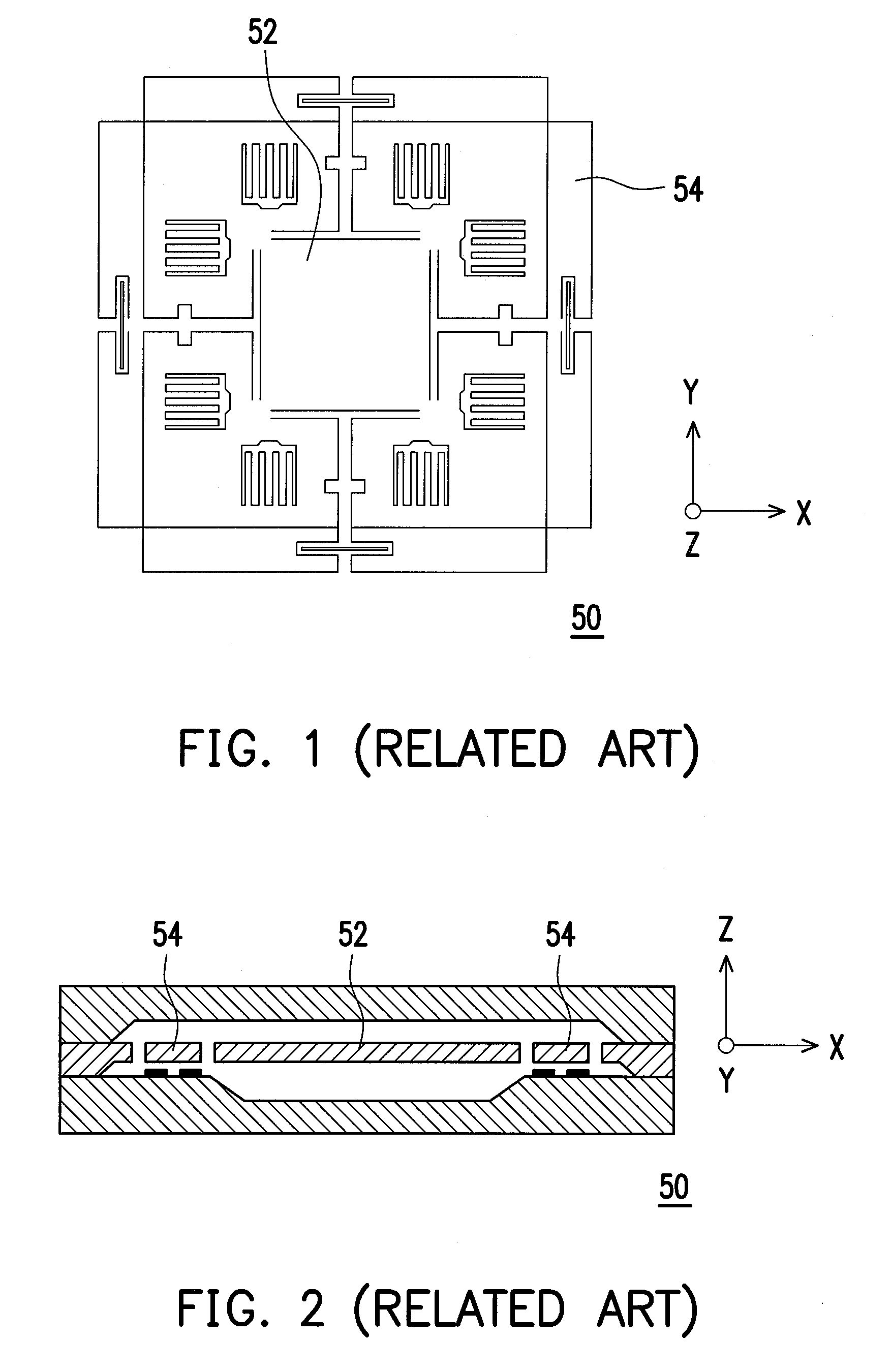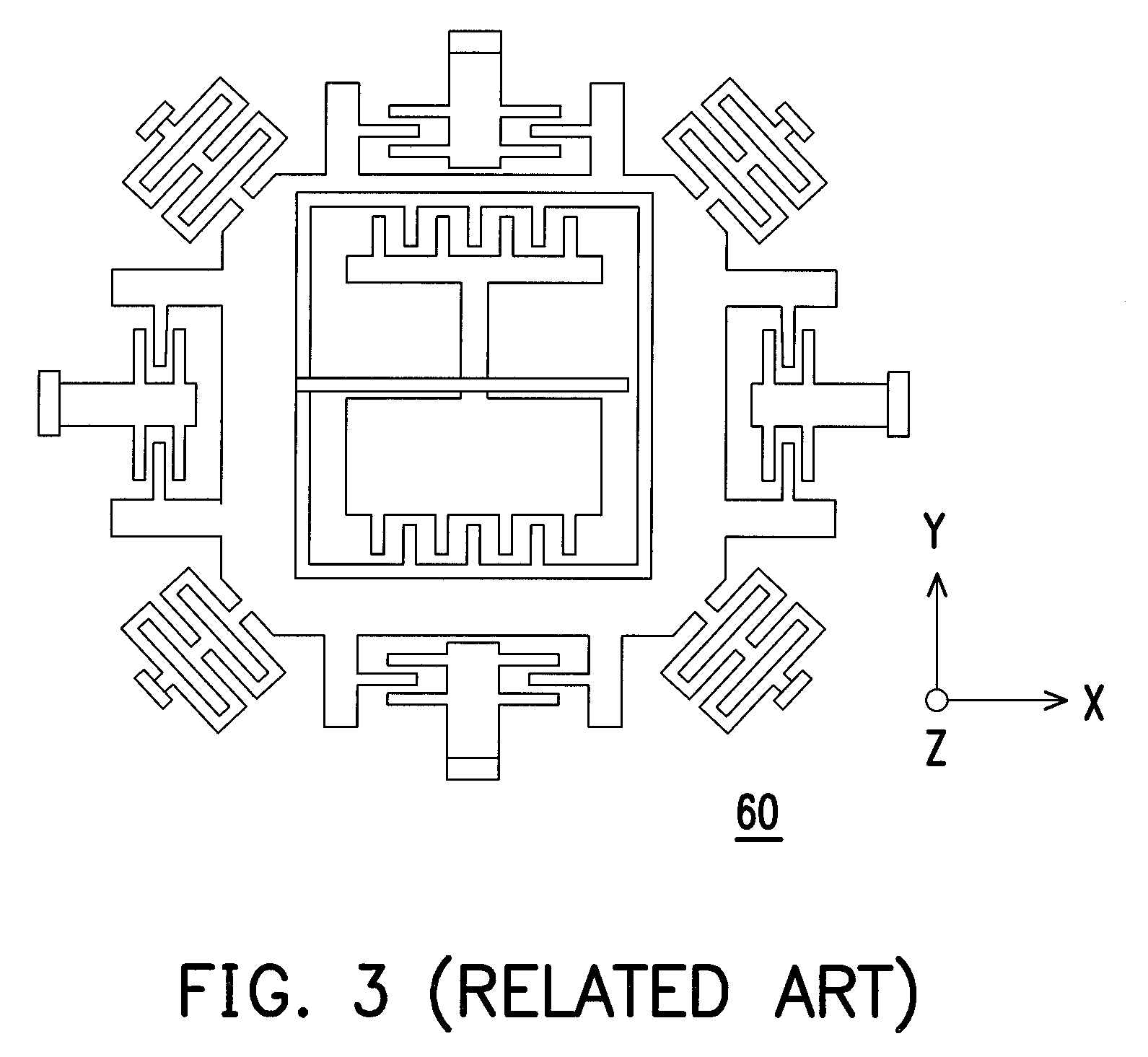Multi-axis capacitive accelerometer
a capacitive accelerometer and multi-axis technology, applied in the field of capacitive accelerometers, can solve the problems of poor cross-axis sensitivities, affecting the performance of cross-axis sensitivity seriously, and poor linearity of the accelerometer, so as to improve the linearity of sensing and eliminate linear shift in rotation
- Summary
- Abstract
- Description
- Claims
- Application Information
AI Technical Summary
Benefits of technology
Problems solved by technology
Method used
Image
Examples
Embodiment Construction
[0021]Reference will now be made in detail to the present embodiments, examples of which are illustrated in the accompanying drawings. Wherever possible, the same reference numbers are used in the drawings and the description to refer to the same or like parts.
[0022]For resolving the problem in sensitivity and linearity of the conventional three-axis accelerometer and conforming the requirement of miniaturization, a multi-axis capacitive accelerometer capable of eliminating mutual interference of acceleration sensing in different axes is provided to achieve high sensitivity and linearity.
[0023]FIG. 4 shows a top view of a multi-axis capacitive accelerometer according to further another embodiment. FIG. 5 is a sectional view of the multi-axis capacitive accelerometer illustrated in FIG. 4 along line I-I′. Referring to FIG. 4 and FIG. 5, the multi-axis capacitive accelerometer 3000 comprises a substrate 3010 and a structure layer 3020. The substrate 3010 has a plurality of sensing ele...
PUM
 Login to View More
Login to View More Abstract
Description
Claims
Application Information
 Login to View More
Login to View More - R&D
- Intellectual Property
- Life Sciences
- Materials
- Tech Scout
- Unparalleled Data Quality
- Higher Quality Content
- 60% Fewer Hallucinations
Browse by: Latest US Patents, China's latest patents, Technical Efficacy Thesaurus, Application Domain, Technology Topic, Popular Technical Reports.
© 2025 PatSnap. All rights reserved.Legal|Privacy policy|Modern Slavery Act Transparency Statement|Sitemap|About US| Contact US: help@patsnap.com



